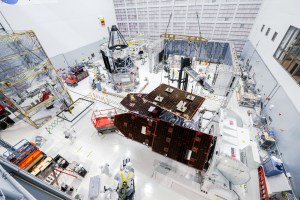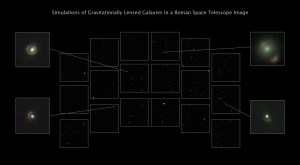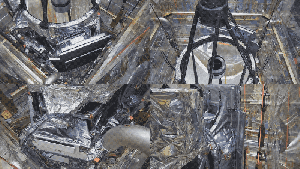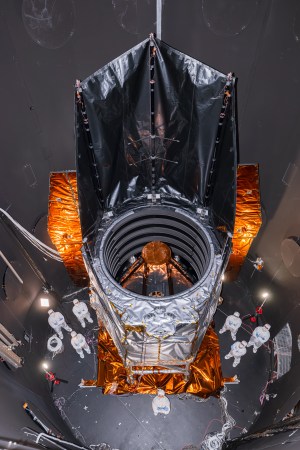Roman Stories

On June 14 and 16, technicians installed solar panels onto NASA’s Nancy Grace Roman Space Telescope, one of the final steps in assembling the observatory. Collectively called the Solar Array Sun Shield, these panels will power and shade the observatory,…

Astrophysics Science Video Producer – Goddard Space Flight Center Growing up in Detroit with a camera in her hand, Sophia Roberts — now an award-winning astrophysics science video producer—never imagined that one day her path would wind through clean rooms,…

A funky effect Einstein predicted, known as gravitational lensing — when a foreground galaxy magnifies more distant galaxies behind it — will soon become common when NASA’s Nancy Grace Roman Space Telescope begins science operations in 2027 and produces vast…

Video Producer – Goddard Space Flight Center What sparked your interest in video production, and what drew you to NASA? Ever since I saw “Star Wars” at nine years old, I knew I wanted to make movies. I would make…

Black holes are invisible to us unless they interact with something else. Some continuously eat gas and dust, and appear to glow brightly over time as matter falls in. But other black holes secretly lie in wait for years until…

The core portion of NASA’s Nancy Grace Roman Space Telescope has successfully completed vibration testing, ensuring it will withstand the extreme shaking experienced during launch. Passing this key milestone brings Roman one step closer to helping answer essential questions about…

To celebrate what would have been the 100th birthday of Dr. Nancy Grace Roman — NASA’s first chief astronomer and the namesake for the agency’s nearly complete Nancy Grace Roman Space Telescope — we’re baking a birthday cake! This isn’t your…

A major part of NASA’s nearly complete Nancy Grace Roman Space Telescope just passed a lengthy thermal test to ensure it will function properly in the space environment. “This milestone tees us up to attach the flight solar array sun…

NASA’s Nancy Grace Roman Space Telescope team shared Thursday the designs for the three core surveys the mission will conduct after launch. These observation programs are designed to investigate some of the most profound mysteries in astrophysics while enabling expansive…

Deputy Integration and Testing Manager – Goddard Space Flight Center Mike Drury began at NASA’s Goddard Space Flight Center in Greenbelt, Maryland, as a temporary technician — a contractor hired for six weeks to set up High Capacity Centrifuge tests.…


























